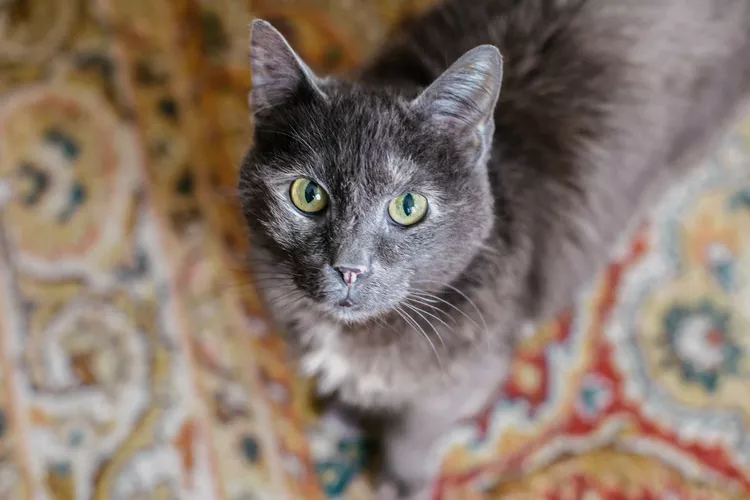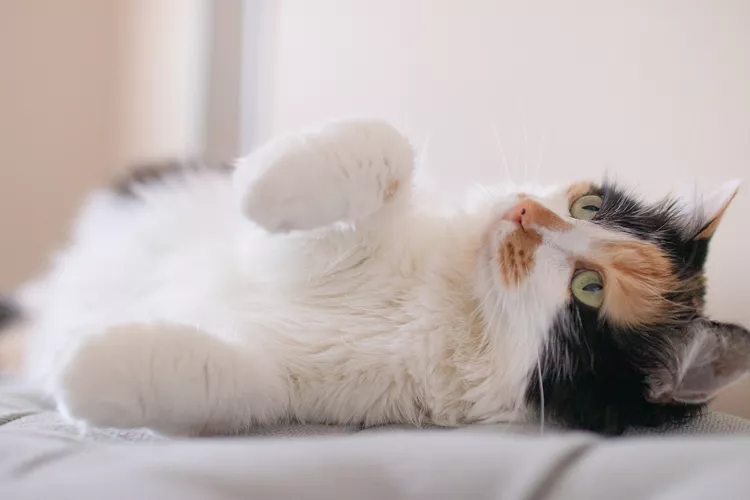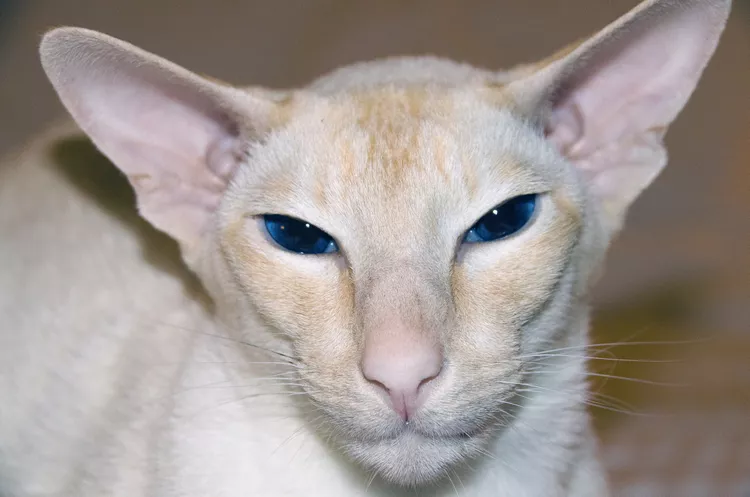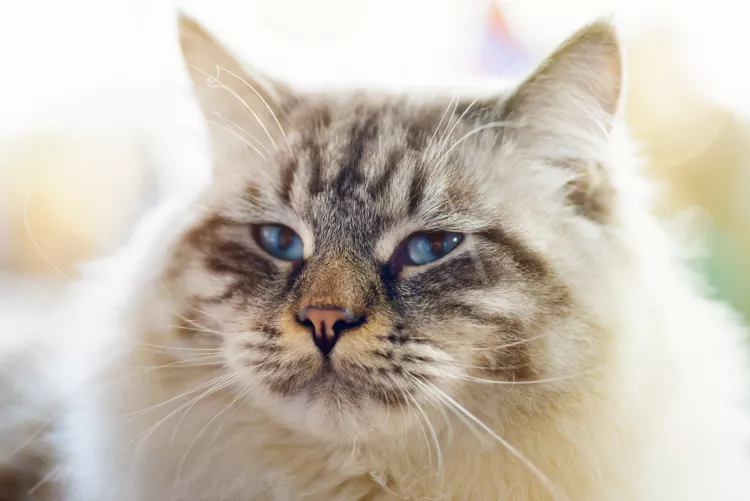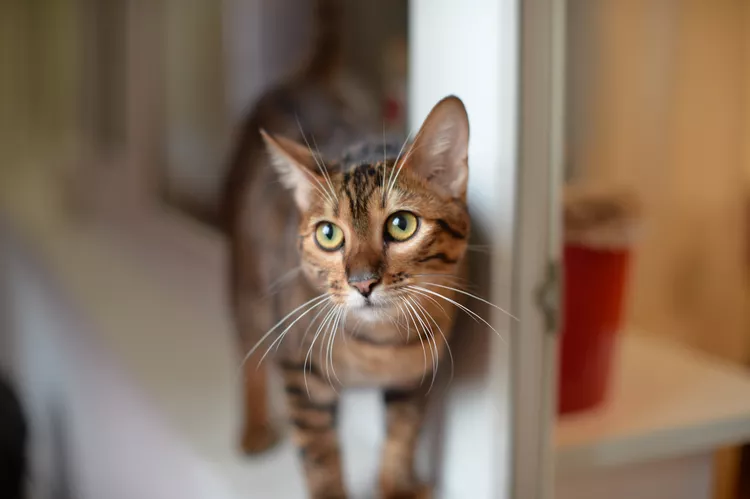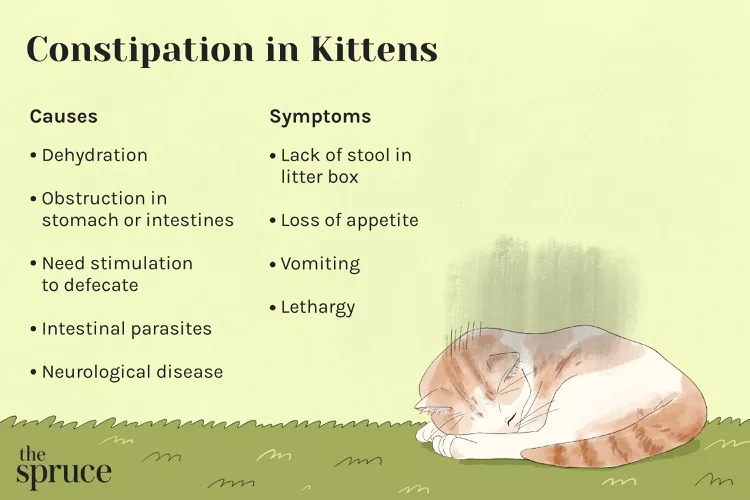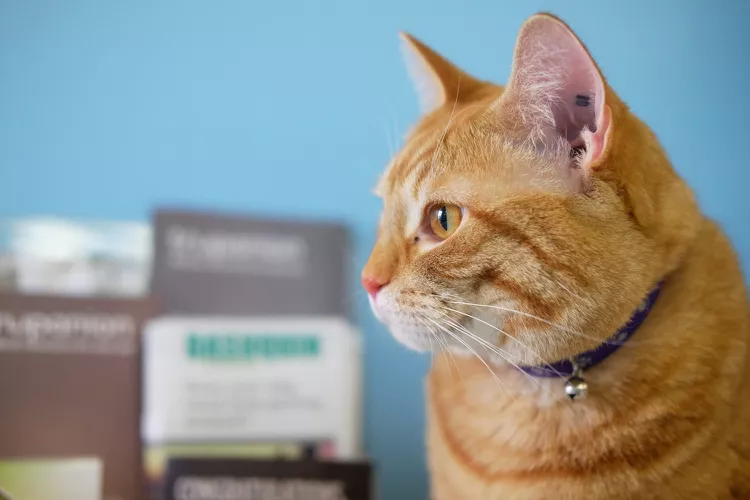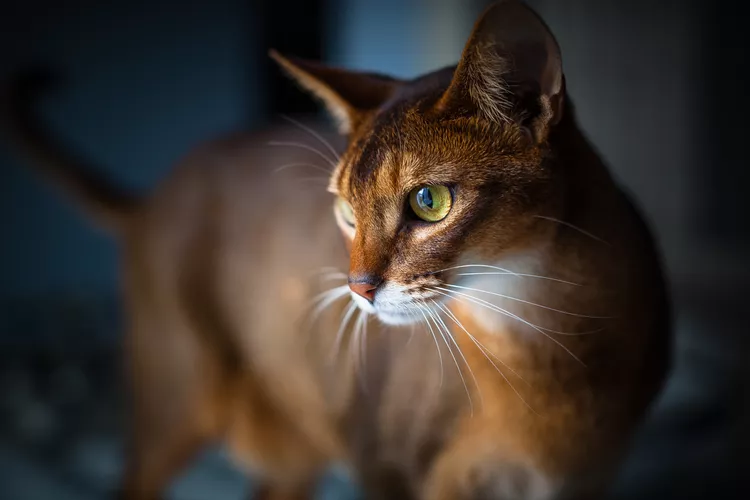
Renal amyloidosis is a potentially deadly disease resulting from an accumulation of abnormal proteins in your cat's kidney. Because the symptoms of renal amyloidosis overlap with those of many other kidney disease, they don't always present clearly. Some of these symptoms include frequent urination, excessive thirst, and vomiting. Take your cat to the vet if you suspect any kind of kidney disease. Renal amyloidosis is most prevalent in Abyssinians and Siamese cats, and relatively rare in other breeds, but all cats are capable of developing the condition. To diagnose renal amyloidosis, your vet will perform an exhaustive exam as well as x-rays and biopsy. There is no cure for renal amyloidosis, but symptoms can be managed with medication and dietary therapy. The prognosis is poor, but certain measures can be taken to extend your cat's survival time.
What Is Renal Amyloidosis?
Renal amyloidosis is the accumulation of an abnormal protein, called "amyloid," around kidney cells. When amyloid becomes deposited into kidney tissue, it displaces normal cells and can cause severe organ damage. Amyloid causes inflammation in the kidney that will inhibit normal function, causing a cat to pass essential proteins in its urine. With the loss of healthy proteins, a cat can lose its protection against clotting and accumulation of abdomen and limb fluid. If renal amyloidosis isn't treated, it can lead to fatal, complete organ failure.
Symptoms of Renal Amyloidosis in Cats
The symptoms of renal amyloidosis are the same as many other kidney diseases in cats but don't always present clearly. If you notice your cat exhibiting signs of discomfort or irregular behavior, pay a visit to your vet.
Excessive Thirst and Urination
A cat with renal amyloidosis may empty its water bowl more quickly than usual or seek out water from other places than its bowl, such as birdbaths, drinking glasses, and the sink. Excessive urination often accompanies thirst, as the damaged kidney won't correctly concentrate and hold the urine. Your cat will drink more and urinate more as the cat cannot quench its thirst.
Skin Tenting
Dehydration as a result of renal amyloidosis can cause a cat's skin to "tent," meaning if the skin is picked up around the neck and gently pulled away from the body, it will form a "tent" instead of falling back to its normal position.
Vomiting and Weight Loss
Weight loss can occur in cats with renal amyloidosis either because of vomiting or decreased appetite. The buildup of waste products that a healthy kidney would be able to filter can cause a cat to feel very ill, stop eating, and start vomiting.
Swollen Limbs
Renal amyloidosis sometimes causes a cat's limbs to swell. When amyloid causes healthy protein levels in the blood to drop too low, fluid build-up in the legs and lymphatic system can occur.
Oral Sores
Diseased kidneys cause a build-up of nitrogen compounds in the blood, leading to mouth ulcers. The symptoms of mouth ulcers include oral bleeding, excessive salivation, and decreased appetite due to oral pain.
Causes of Renal Amyloidosis
Several factors may lead to renal amyloidosis in cats. The abnormal protein structure is believed to result from a gene mutation, a hereditary disorder present in the bloodline of feline family trees.
- Genetics: Certain breeds of cats are more likely to develop renal amyloidosis than others, but the specific cause of this disease is not known. Abyssinians and Siamese cats are thought to have genetic predispositions to developing renal amyloidosis. In these breeds, renal amyloidosis is inherited.
- Age: Cats like Abyssinians and Siamese tend to develop amyloidosis at a young age spontaneously. Most other cats with amyloidosis are older than seven, but a diagnosis can occur at any point in a cat's life. The risk of developing the disease increases as a cat ages. Some Siamese cats with genetic amyloidosis may be diagnosed between 1 and 4 years of age. Typically, these cats usually have no pre-existing inflammatory conditions.
- Pre-existing disease: Any disease or cancer that causes inflammation of the kidney can make a cat more vulnerable to developing renal amyloidosis. Chronic kidney infection has been connected to renal amyloidosis as well.
Diagnosing Renal Amyloidosis in Cats
It is difficult to distinguish renal amyloidosis in cats from other renal disease, and the symptoms of renal amyloidosis are shared by many other feline organ diseases. A diagnosis is made more complicated by the fact that renal amyloidosis is relatively rare in cats. If your vet notices that your cat's kidney is the most impacted of all of the affected organs, your vet may consider amyloidosis a cause and proceed with tests. A vet touching the kidneys or observing them on an x-ray will likely not be enough to make a diagnosis. The only way an accurate diagnosis can be given is with a kidney biopsy. The biopsy will reveal the presence of amyloid, which is unfortunately sometimes performed postmortem.
Treatment
There is no cure for renal amyloidosis in cats. Managing the symptoms of the disease may prolong the quality of a cat's life and slow the disease progression, but there is no treatment to reverse or stop amyloid protein build-up. Treatment of uncomfortable symptoms may include fluid administration, dietary changes, anti-inflammatory medications, and medication to treat secondary problems such as hypertension.
Prognosis for Cats With Renal Amyloidosis
The prognosis for cats with renal amyloidosis is poor. Most cats with affected or failing kidneys will survive less than one year. Other, less affected cats may be able to extend their lives using medication and dietary therapy to achieve a closer-to-normal life expectancy. This is only true if your cat has not yet experienced any kidney failure.
How to Prevent Renal Amyloidosis
The primary way to prevent renal amyloidosis is by closely monitoring your cat's health. Vets should regularly examine Abyssinian and Siamese cat breeds to develop renal amyloidosis. Even though it isn't known what causes this disease, if signs of renal amyloidosis are discovered early, the progression may be able to be slowed. Annual blood screening for young cats and twice-yearly screenings for older cats is recommended to monitor kidney health.
-
Is renal amyloidosis common in cats?
Renal amyloidosis is generally not common in cats, but if you have an Abyssinian or Siamese cat, the disease is much more likely to develop. Monitor any cat for signs of illness, but keep a closer eye on those two breeds.
-
Is renal amyloidosis curable?
Unfortunately, renal amyloidosis is not curable. A vet can take specific measures to improve your cat's quality of life, but a cat isn't expected to survive long after a diagnosis.
-
Why is my cat urinating excessively?
Renal amyloidosis can cause excessive urination in cats because the impaired kidney cannot correctly concentrate nutrients. This means that every time your cat pees, it expels essential proteins and vitamins that its body doesn't know how to hold onto through a regular urination pattern. See a vet immediately if this happens.




